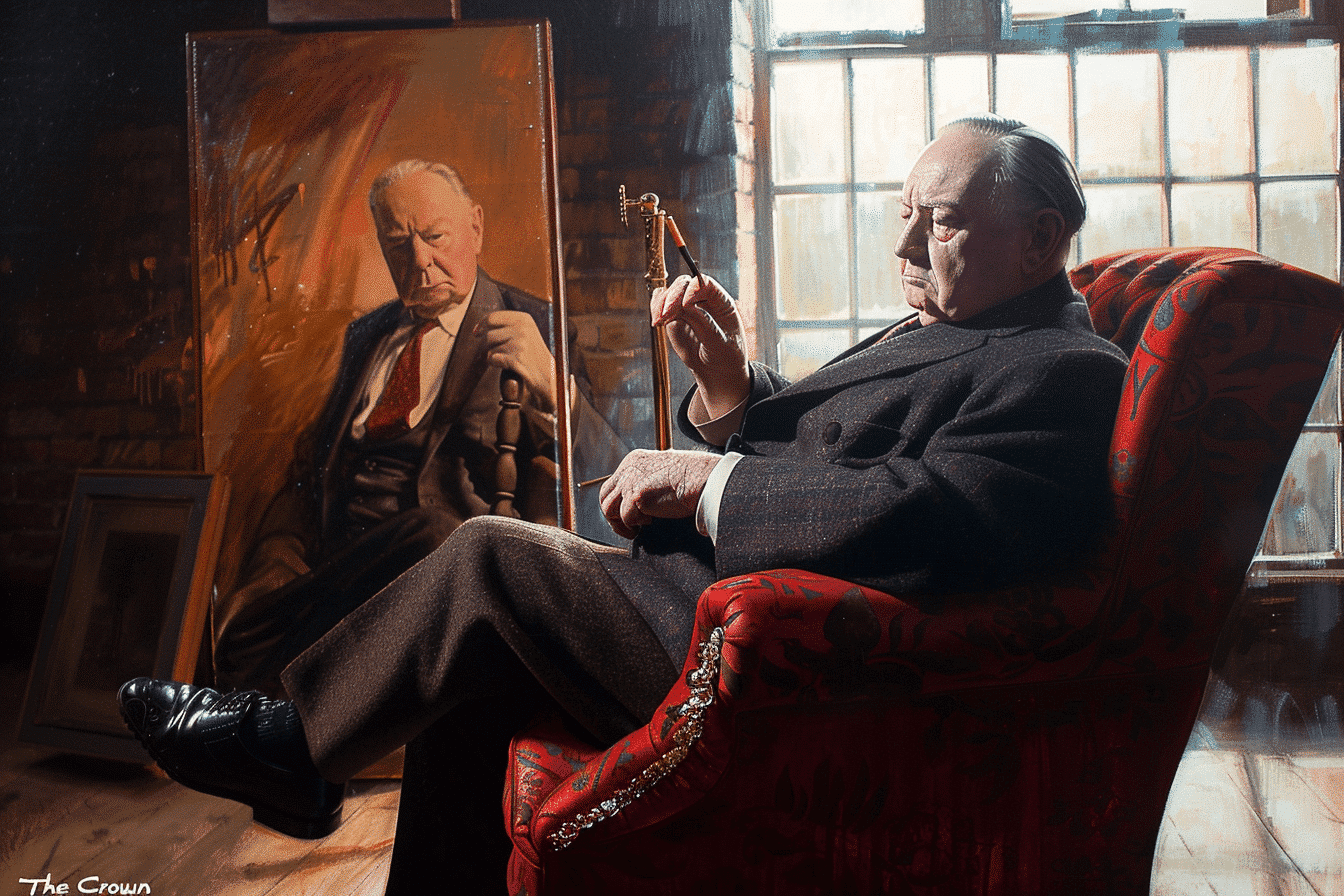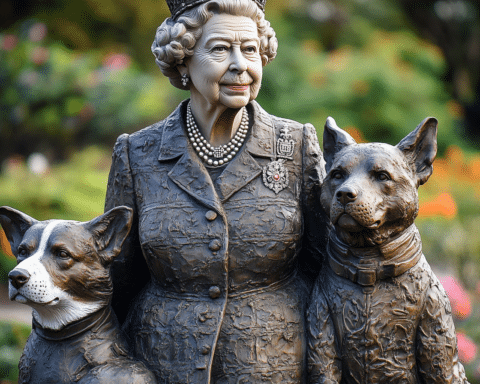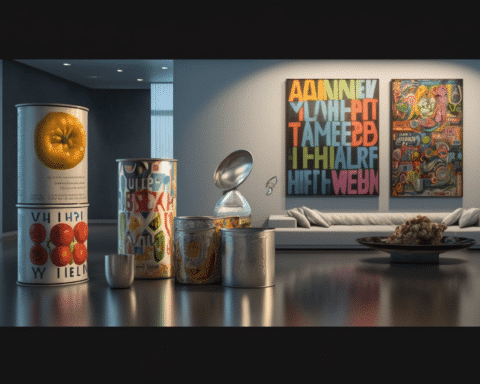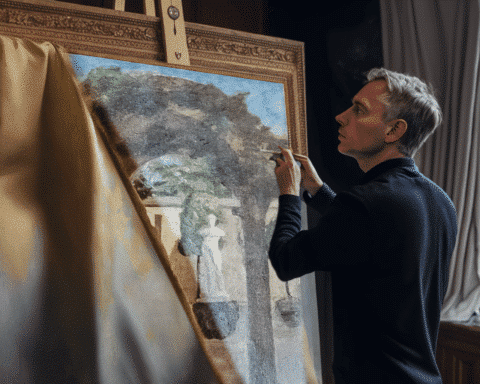In a fascinating turn of events, a version of Winston Churchill’s infamous portrait, depicted in the Netflix series “The Crown,” has fetched a staggering $840,000 at auction. This portrait, once described by Churchill as a “humiliation,” has not only drawn renewed interest but also sparked discussions about the power of image control among historical leaders.
A Portrait of Controversy
The painting, commissioned to celebrate Churchill’s 80th birthday, was unveiled in Westminster Hall in 1954. However, Churchill’s reaction was anything but celebratory. “That is not a painting; it’s a humiliation!” exclaimed Churchill, portrayed by John Lithgow in “The Crown,” during his confrontation with the painter Graham Sutherland, played by Stephen Dillane. Churchill viewed the portrait as a stark and unflattering representation, calling it “a broken, sagging, pitiful creature.”
The episode culminates dramatically with Churchill’s wife, Clementine, played by Harriet Walter, burning the portrait. “I think he was quite vain about his image,” explained Andre Zlattinger, Deputy Chairman UK and Head of Modern British & Irish Art at Sotheby’s. Churchill’s desire to control his image is evident in his strong reaction and ultimate destruction of the painting.
The Study’s Journey to Auction
Although the original painting was destroyed, a study created by Sutherland in preparation for the portrait survived. Displayed at Blenheim Palace, where Churchill was born, the study was auctioned at Sotheby’s, fetching £660,000 ($842,490). “(Sutherland) caught him in a much more relaxed, intimate way,” Zlattinger noted, highlighting the difference between the study and the final, destroyed portrait.
Historical Precedents of Image Control
Churchill’s insistence on controlling his image is not unique among historical leaders. From Ancient Egyptian pharaohs to Queen Elizabeth I, rulers have manipulated their representations to convey power and stability. Robert Blyth, Senior Curator of World and Maritime History at Royal Museums Greenwich, mentioned that Elizabeth I’s portraits carefully smoothed over any signs of aging to maintain an image of eternal youth and strength. Similarly, Queen Victoria later embraced photography for more accurate portrayals, moving away from idealized paintings.
Political Precarity and Personal Vanity
Churchill’s political career was marked by tumult and triumph, influencing his desire to maintain a solid public image. Bryn Sayles, Head of Sale, Modern & Post-War British Art at Sotheby’s, remarked on Churchill’s consistent control over his portrayal, citing an instance where Churchill made sculptor Jacob Epstein remove a bit of flab from a bust. “From the beginning, Churchill understood the importance of his image as a politician and was very clear about how he felt that image should be presented to the public,” Sayles stated.
A Renewed Interest
The portrayal of Churchill’s portrait saga in “The Crown” and Gary Oldman’s depiction in “Darkest Hour” has reignited interest in Churchill’s legacy. “We had new collectors coming in the market looking for Churchill paintings because there was a renewed interest in him,” Sayles explained. This resurgence of interest underscores the lasting impact of Churchill’s image and the historical significance of his portraits.
The auction of Churchill’s study for $840,000 is a testament to the enduring fascination with one of the UK’s most prominent leaders. While Churchill might not have appreciated the renewed focus on his despised portrait, the study’s sale highlights the continued relevance and intrigue surrounding his legacy.




